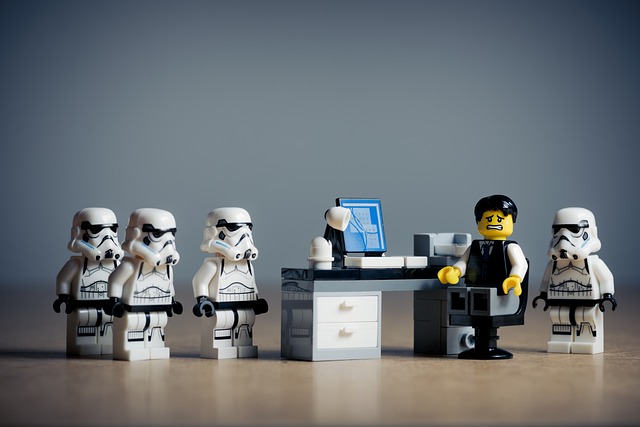Understanding Customer Retention: A Foundation for Growth
Customer retention is more than just a buzzword; it’s a vital strategy that businesses of all sizes should prioritize. Why? Because retaining existing customers is often much more cost-effective than acquiring new ones. Studies reveal that acquiring a new customer can cost five to twenty-five times more than retaining an existing one. Naturally, when you cultivate loyal customers, your profits can significantly soar. Implementing effective customer retention strategies ultimately allows you to build a sustainable business model. This approach fosters long-term relationships with your clientele, ensuring a reliable revenue stream and promoting brand advocacy.
One of the first steps in understanding customer retention is recognizing the factors that contribute to customer loyalty. At its core, it’s about delivering exceptional value. If customers perceive that your product or service meets their needs, they will return. However, in today’s competitive landscape, value extends beyond just the tangible products or services. It also encompasses your customer service, the experience customers have with your brand, and the emotional connection they develop with your business. The deeper this connection, the more likely they are to continue purchasing from you, recommend you to others, and engage with your brand on social media platforms.
Identifying The Right Customer Retention Strategies
Let’s discuss some effective customer retention strategies. First, loyalty programs have become a favorite among many businesses. These programs reward customers for repeat purchases, thus encouraging them to continue to choose your brand over competitors. A well-structured loyalty program can diversify its rewards to cater to varying customer preferences, from discounts to exclusive experiences. Loyalty programs not only incentivize repeat visits but also create a sense of belonging among customers. When customers feel appreciated, they develop an emotional attachment to your brand, which reinforces their loyalty.
Another potent strategy is personalization. Today’s customers crave tailored experiences. This approach can include segmenting your audience based on purchasing behavior, preferences, or demographics, and then crafting targeted communications. Utilize data analytics to gain insight into your customers’ habits and preferences. When you personalize your emails, offers, and interactions, you demonstrate that you understand your customers, enhancing their overall experience. Furthermore, customers are more likely to respond positively to personalized content, as it resonates with their specific needs or interests.
Exceptional Customer Service: A Pillar of Retention
Exceptional customer service plays an undeniable role in customer retention strategies. Studies indicate that poor customer service drives away customers faster than anything else. Your customers need to know that they can rely on you. It’s essential to listen to their feedback and act upon it. Create multiple channels for customers to reach out, whether through chat, email, or phone. Responding promptly to queries and resolving issues efficiently can turn a potential negative experience into a positive one. When customers feel heard and valued, they are less likely to leave and more likely to become advocates for your brand.
Moreover, training your customer service team to go above and beyond is crucial. Empower them with the tools and authority to make decisions that benefit the customer, such as offering refunds or discounts when appropriate. Customers appreciate quick resolutions and personalized care, which builds trust and loyalty between them and your brand. Building a solid, customer-focused culture within your organization creates an environment where retention becomes a shared responsibility across every department, not just a sales or customer service obligation.
Leveraging Feedback for Continuous Improvement
Customer feedback is an invaluable tool for continuously improving your services and retaining customers. Regularly collecting feedback can take many forms, including surveys, direct outreach, or social media engagement. Survey your customers after purchases, or reach out for testimonials to gauge their experience. Being proactive shows that you are committed to enhancing their experience. Actively listening to customer feedback allows businesses to identify areas of strength and weakness, providing critical insights to enhance the customer experience.
Furthermore, when customers see that their feedback leads to tangible changes, they feel valued. For instance, if you adjust your product line based on customer suggestions, or if you improve service after receiving constructive criticism, customers will feel invested in your brand. This reinforcement fosters loyalty, as they recognize that their opinions matter. In a world where consumers have many options, meticulously attending to feedback can distinguish your brand as customer-centered, driving loyalty and higher profits.
Utilizing Technology in Customer Retention Efforts
In our increasingly digital world, utilizing technology effectively plays a pivotal role in customer retention. Embrace Customer Relationship Management (CRM) systems to streamline your interactions with customers. A well-implemented CRM helps businesses maintain records of customer interactions, purchase history, and communication preferences. This valuable information allows you to tailor your marketing efforts, ensuring that your outreach speaks directly to the customer’s interests and needs. The ability to anticipate a customer’s needs based on past interactions enhances their experience and strengthens their bond with your brand.
Additionally, consider implementing chatbots for immediate customer assistance. Many consumers appreciate the efficiency that comes with AI-driven customer service. While chatbots can answer frequently asked questions, they can also provide 24/7 support, leading to higher customer satisfaction. However, it’s crucial to balance automation with human support. Make sure customers have the option to speak to a real person if their issue requires nuanced assistance. This balance shows that you value their needs and are committed to offering the best possible service.
Engagement and Community-Building: Fostering Brand Loyalty
Engaging with your customers goes beyond transactional interactions. Creating a community around your brand can significantly enhance customer retention. Social media serves as a fantastic platform for fostering community engagement. Encourage discussions, share relevant content, and create space for your customers to interact with one another. You can develop a sense of belonging by hosting events, initiating forums, or creating loyalty clubs. When customers feel they are part of something larger, they develop stronger emotional ties to your brand.
Another engaging approach is user-generated content, where you encourage customers to share their experiences online. This content can include reviews, testimonials, or photos of them using your products. Such authentic engagement not only strengthens community ties; it increases your brand’s credibility. Customers are generally more likely to trust fellow consumers over traditional marketing pitches. Incorporating this strategy can lead to higher retention rates and boost your profits in the long run.
Measuring Success: Key Metrics for Customer Retention
To fine-tune your customer retention strategies, it’s vital to measure their effectiveness. Track metrics such as Customer Lifetime Value (CLV), Churn Rate, and Net Promoter Score (NPS). CLV indicates the total revenue you can expect from a single customer throughout their relationship with your business. Understanding this number allows you to calculate how much you can invest in retaining customers while still being profitable.
On the other hand, churn rate shows the percentage of customers who leave your service or discontinue their relationship with your brand. A high churn rate can indicate issues with customer satisfaction or product quality. Finally, NPS measures customer loyalty by asking how likely customers are to recommend your brand to others. This metric can give insight into customer sentiment. Regularly monitoring these metrics will allow you to make data-driven decisions about your retention strategies and make timely adjustments to improve customer loyalty.
Wrapping Up: The Race Towards Sustainable Growth
In conclusion, the journey towards effective customer retention is not a sprint but a marathon. Building loyalty takes time, effort, and a genuine commitment to understanding your customers. From establishing loyalty programs to leveraging technology and engaging with your customer community, each strategy plays an integral role in the bigger picture of your business success. Remember, it’s about fostering relationships, providing value, and continually improving based on your customers’ needs. As you diligently implement these strategies, you are not only poised to enhance customer retention but are also on a path to significantly boost your profits.
FAQs
- 1. What are customer retention strategies?
- Customer retention strategies are tactics used by businesses to keep their existing customers and encourage repeat business. These strategies can include loyalty programs, personalized marketing, exceptional customer service, and engaging customers through community-building efforts.
- 2. Why is customer retention important for profits?
- Retaining existing customers is often more cost-effective than acquiring new ones. Loyal customers tend to spend more over time and often recommend the brand to others, leading to increased revenue and lower marketing costs.
- 3. How can I measure customer retention success?
- Key metrics include Customer Lifetime Value (CLV), which assesses the total revenue expected from a customer, Churn Rate, which measures the percentage of customers who stop buying, and Net Promoter Score (NPS), which gauges customer loyalty.
- 4. What role does customer service play in retention?
- Exceptional customer service is crucial for retention as it directly influences customer satisfaction. Quick and effective responses to customer inquiries, resolving issues, and making customers feel valued can significantly enhance their loyalty.
- 5. Can technology help with customer retention?
- Yes! Technology, like Customer Relationship Management (CRM) systems and chatbots, helps streamline interactions with customers, offer personalized experiences, and provide24/7 support to enhance overall customer satisfaction, thereby improving retention rates.



